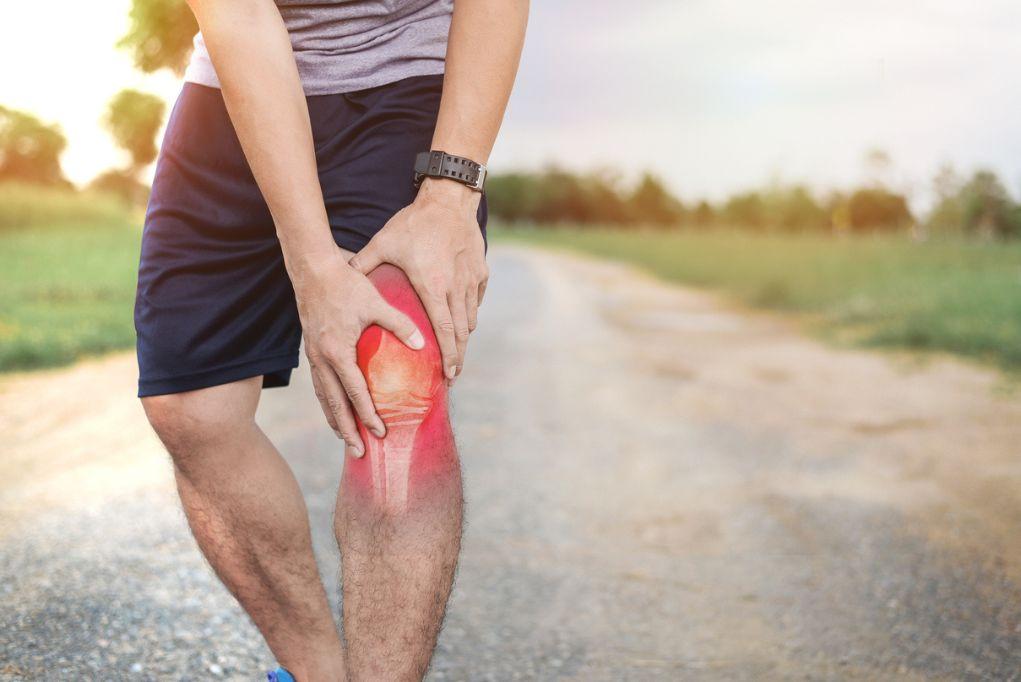MCL Sprain: Treatments and Recovery
If you’ve ever felt a sharp pain on the inside of your knee after a sudden twist, awkward landing, or direct impact, you may have sprained your medial collateral ligament (MCL). This common knee injury affects athletes, active individuals, and even those who simply take a wrong step. While an MCL sprain can be frustrating and painful, the good news is that most cases heal without surgery.

What is an MCL Sprain?
The medial collateral ligament (MCL) is a strong band of tissue located on the inner side of the knee. Its primary role is to stabilize the knee joint and prevent excessive side-to-side movement. When the MCL is overstretched or torn — often due to a sudden blow to the outside of the knee or a twisting motion — the result is an MCL sprain.
MCL sprains are classified into three grades based on severity:
- Grade 1 (Mild Sprain): The ligament is stretched but not torn. There may be mild pain and swelling, but the knee remains stable.
- Grade 2 (Moderate Sprain): The ligament is partially torn, causing more noticeable pain, swelling, and instability. Walking may be uncomfortable.
- Grade 3 (Severe Sprain): The ligament is completely torn, resulting in significant pain, swelling, and knee instability. Weight-bearing may be difficult or impossible without support.
Common Causes of MCL Sprains
MCL sprains typically occur due to direct impact or excessive strain on the knee. Common causes include:
- Sports Injuries: Football, soccer, basketball, and skiing frequently involve sudden changes in direction, twisting motions, and collisions that put the MCL at risk.
- Falls or Missteps: Landing awkwardly from a jump or slipping on uneven terrain can place stress on the MCL.
- Direct Impact to the Outer Knee: A tackle or hit from the side can push the knee inward, overstretching or tearing the MCL.
Symptoms of an MCL Sprain
If you’ve injured your knee and suspect an MCL sprain, here are some key symptoms to watch for:
- Pain on the inner side of the knee (especially when pressing on the area)
- Swelling and stiffness around the knee joint
- Knee instability or a feeling that your knee might “give out”
- Difficulty bending or straightening the knee
- Tenderness along the inside of the knee
If you’re experiencing these symptoms, especially knee instability, it’s important to seek medical attention to determine the severity of the injury and rule out other knee damage.
Diagnosis: How is an MCL Sprain Identified?
At Motion Orthopaedics, diagnosing an MCL sprain begins with a thorough evaluation, which may include:
- Physical Examination: A doctor will check for pain, swelling, and knee stability by gently pressing on the inner knee and assessing your range of motion.
- Stress Testing: Your provider may move your knee in specific ways to determine how much laxity (looseness) exists in the MCL.
- Imaging Tests: An X-ray can rule out fractures, while an MRI provides detailed images of soft tissues to confirm the severity of the sprain.
Proper diagnosis is essential to ensure an accurate treatment plan and to rule out additional injuries, such as ACL or meniscus damage, which sometimes accompany MCL sprains.
Treatment Options for an MCL Sprain
The treatment for an MCL sprain depends on its severity, but most cases heal with non-surgical approaches. Here’s what to expect:
Rest and Activity Modification
- Limiting activities that put stress on the knee (such as running or pivoting) allows the ligament to heal properly.
- Mild to moderate sprains may require a brace or knee sleeve to provide support and prevent further strain.
RICE Therapy (Rest, Ice, Compression, Elevation)
- Rest: Avoid excessive movement and use crutches if necessary for severe sprains.
- Ice: Apply ice packs to the affected area for 15-20 minutes every few hours to reduce swelling.
- Compression: Wearing a compression bandage can help minimize swelling and provide additional support.
- Elevation: Keeping the leg elevated can help reduce fluid buildup and promote faster healing.
Physical Therapy
Physical therapy plays a crucial role in MCL sprain recovery. A structured rehabilitation program can:
- Improve range of motion and flexibility
- Strengthen surrounding muscles to stabilize the knee
- Prevent stiffness and long-term weakness
Common physical therapy exercises include:
- Quadriceps and hamstring strengthening (e.g., leg presses, hamstring curls)
- Balance exercises to improve stability
- Gentle stretching to maintain mobility
Pain Management
- Over-the-counter anti-inflammatory medications (such as ibuprofen) can help manage pain and swelling.
- In some cases, cortisone injections may be considered for persistent inflammation.
Surgery (For Severe Cases)
Surgery is rarely needed for MCL sprains, as the ligament often heals well on its own. However, if the MCL is completely torn and other knee structures (such as the ACL) are also damaged, surgical repair may be necessary. This involves stitching the ligament back together or reconstructing it with a graft.
MCL Sprain Recovery Timeline
Recovery time varies based on the severity of the sprain:
- Grade 1 (Mild Sprain): 1-3 weeks of rest and rehabilitation
- Grade 2 (Moderate Sprain): 4-6 weeks with gradual return to activity
- Grade 3 (Severe Sprain): 8+ weeks, with a longer recovery if surgery is required
It’s important to follow your doctor’s and physical therapist’s recommendations before returning to full activity. Rushing back too soon increases the risk of re-injury.
Preventing Future MCL Injuries
While not all injuries can be avoided, you can reduce your risk of an MCL sprain by:
- Strengthening your legs: A strong lower body helps stabilize the knee.
- Improving flexibility: Stretching regularly can help prevent ligament strains.
- Using proper technique: Whether in sports or daily movement, avoiding awkward landings and knee twisting is key.
- Wearing protective gear: Knee braces or supportive taping can be beneficial if you have a history of knee injuries.
When to See a Specialist
If you suspect an MCL sprain, don’t wait to get evaluated, especially if you experience persistent pain, swelling, or knee instability. Early diagnosis and treatment can speed up your recovery and reduce the risk of long-term complications.
At Motion Orthopaedics, our team specializes in diagnosing and treating knee injuries, helping patients return to their daily activities and sports as quickly and safely as possible.
Get Expert Care for Your MCL Injury at Motion Orthopaedics
Knee injuries can be frustrating, but the right treatment plan can make all the difference. If you’re dealing with knee pain or suspect an MCL sprain, Motion Orthopaedics is here to help. Our experienced team will assess your injury and develop a customized recovery plan to get you back to full strength.
Contact us today to request an appointment and take the first step toward healing your knee.




